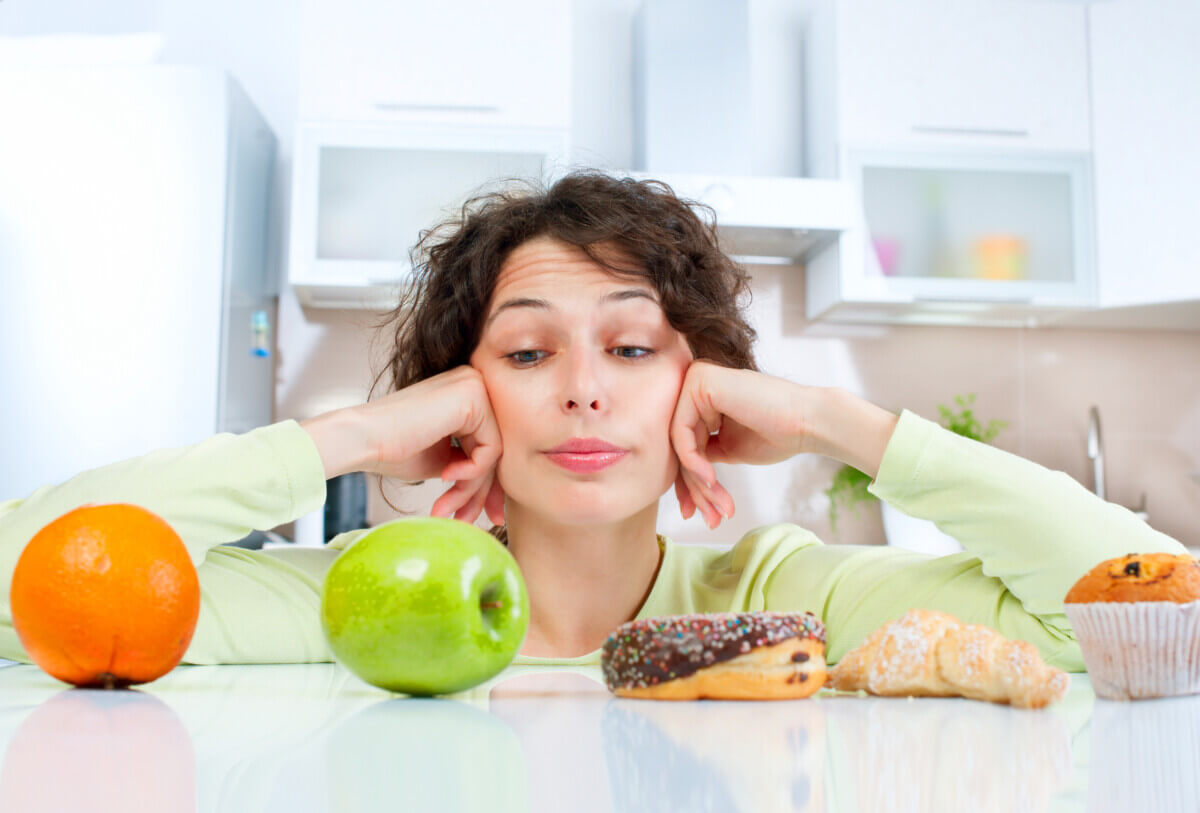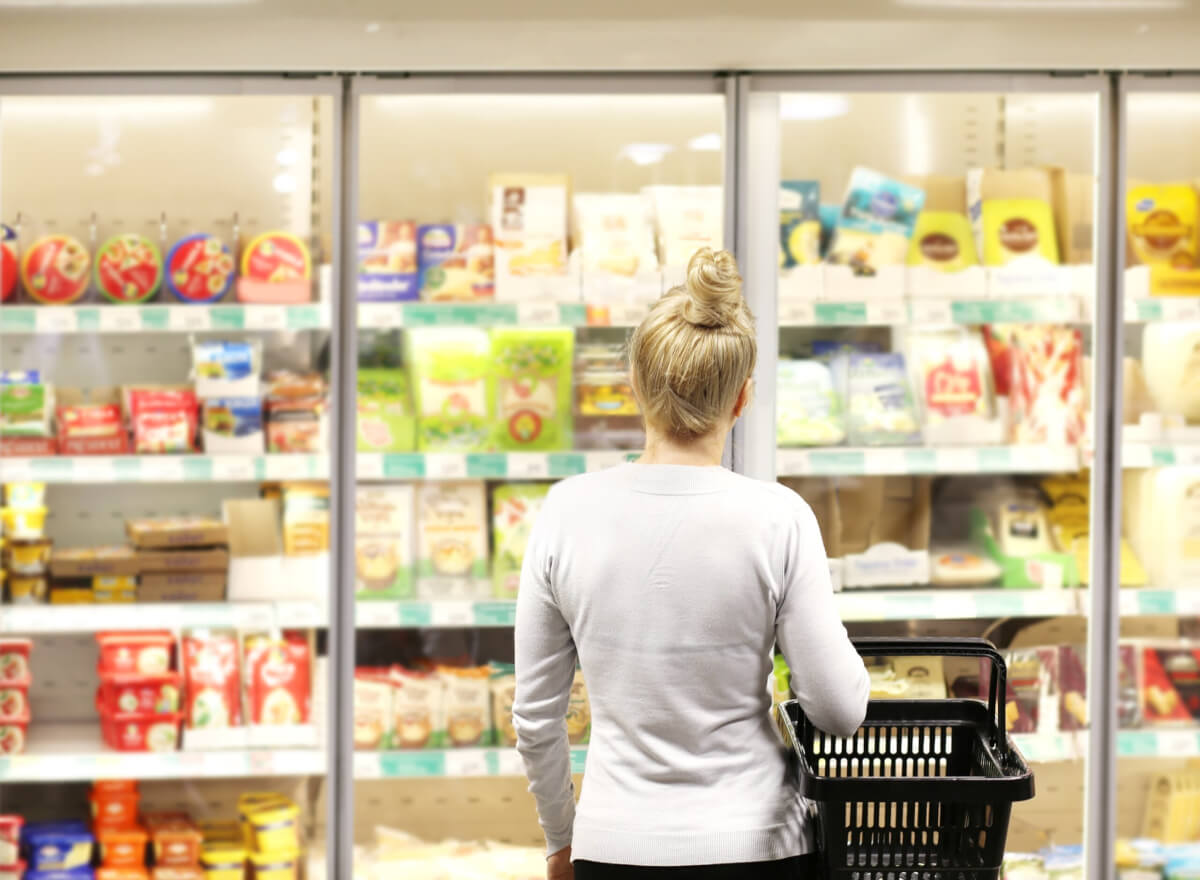
A woman choosing between an apple or a donut (Photo by Subbotina Anna on Shutterstock)
GRONINGEN, Netherlands — Picture this: you're at the grocery store, feeling virtuous as you reach for the low-fat yogurt. But then, you find yourself grabbing a pack of sugary cookies. If this sounds familiar, you're not alone. A new study has revealed that when it comes to grocery shopping, we're all riding a seesaw of healthy and unhealthy choices. The fascinating takeaway? Making a healthy choice now might just lead you to make an unhealthier one next, and the pattern continues throughout your entire shopping trip.
This research, published in The Journal of Retailing, might help play a role in the way you navigate the grocery store (and the items in your cart).
Methodology
To unravel the complex dance of healthy and unhealthy choices, the researchers conducted two studies. In Study 1, they analyzed real-world purchase data from over 5,000 shopping trips at a large Dutch supermarket chain. Using handheld scanners, shoppers scanned each product as they selected it, allowing the researchers to track the exact sequence of their choices. The researchers calculated the “relative healthiness” of each choice by comparing its calorie density (calories per 100g) to the average of its product category.
In Study 2, they recruited 504 primary household shoppers in the U.S. to participate in an online grocery shopping simulation. Participants made 25 product choices across various categories, with the order of categories and products randomized to eliminate any sequence effects. To incentivize realistic choices, participants were told one lucky shopper would win their selected products and cash totaling $75.
Results
Across both studies, a clear pattern emerged: the relative healthiness of an initial product choice was inversely related to the relative healthiness of the next choice. In other words, a healthier choice was typically followed by an unhealthier one, and vice versa. The researchers estimated that a choice 60 calories per 100g healthier than the category average was followed by a choice 8-11 calories per 100g unhealthier.
Interestingly, this “balancing act” was less pronounced when the next choice was from an indulgent “vice” category (like cookies) compared to a “virtue” category (like yogurt). In the brick-and-mortar store, the balancing effect also weakened as the shopping trip progressed, possibly due to decision fatigue or reduced self-control.
The researchers also found an intriguing asymmetry in the balancing pattern. In the real-world shopping data, healthier choices were balanced out more than unhealthier ones. However, in the online experiment, the opposite was true - unhealthier choices led to more pronounced balancing.

Study Limitations
The researchers did not directly assess why healthier choices lead to unhealthier ones and vice versa, though they propose several psychological explanations, such as perceived goal progress or self-licensing. Future research could test these mechanisms more directly.
Additionally, the studies did not account for how much of each product shoppers purchased or consumed. It's possible that the balancing of healthy and unhealthy choices extends beyond just product selection to serving sizes and consumption quantities as well.
Finally, while the studies spanned different shopping contexts and samples, they were limited to Dutch and American consumers. The generalizability of the findings to other cultures and food environments remains to be tested.
Takeaways
This research has important implications for consumers, retailers, and policymakers alike. For consumers, it's a reminder that our food choices don't happen in isolation. They're influenced by our previous decisions in ways we may not even realize. Being aware of this balancing tendency could help shoppers make more consistently healthy choices.
For retailers and health advocates, the findings suggest that promoting healthy eating requires a holistic, trip-level approach. Interventions that focus on improving single choices (like placing healthier options at checkout) may have limited effectiveness if they don't account for the dynamic nature of food decision-making. Instead, retailers could experiment with providing real-time feedback or reminders to help shoppers stay committed to their health goals throughout the entire shopping journey.
Policymakers should also take note. Nutrition labeling, taxes, and subsidies are often evaluated based on their impact on specific product categories. But if healthier choices in one category are offset by unhealthier choices later, the net effect on dietary health may be muted. Accounting for these behavioral spillovers could lead to a more effective nutrition policy.
In the meantime, you can run your own version of the study by paying attention to your shopping habits next time you make a grocery run. Do you find yourself doing exactly what the study suggests? Perhaps being more mindful of the habit could lead you to make greater efforts to make healthier choices more consistently.
EdNews Editor-in-Chief Steve Fink contributed to this report.










